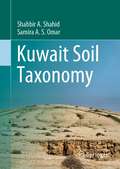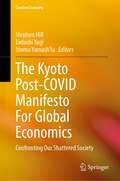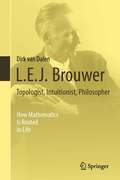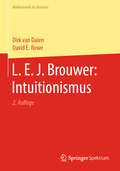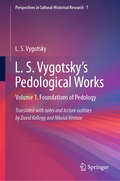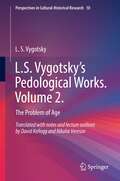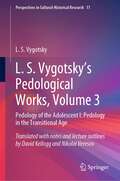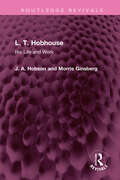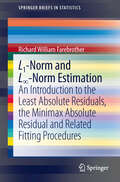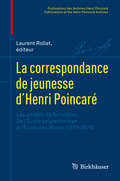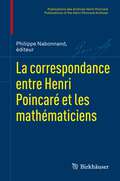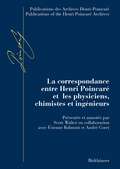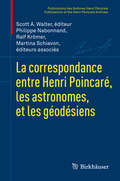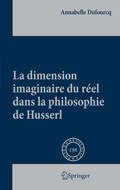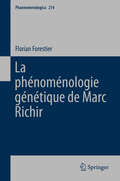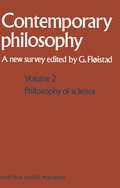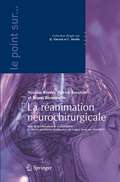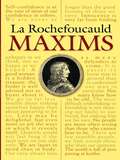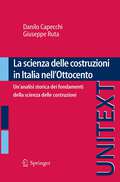- Table View
- List View
Kuwait Soil Taxonomy
by Shabbir A. Shahid Samira A. OmarThis book provides guidelines to key soil taxa in the deserts of Kuwait and guidance to associated procedures for laboratory analyses of soils, leading to land use planning on informed decisions. Soils are essential to provide food, feed, and fiber in addition to multiple ecosystem services that sustain life on earth. To achieve the above services sustainably, it is essential to use soils rationally based on their potential for specific uses. This requires establishing national soil classification systems to assess soils locally and to provide guidance to other countries where similar soils may be occurring. Once soil classification is established, it becomes easier to adopt technologies established on similar soils and environmental conditions without conducting long-term and expensive experimental trial. The taxa are established based on soil’s morphological, physical, chemical, and mineralogical properties and climatic factors. It offers opportunities to maintain future soil surveys and their correlation to the soils of Kuwait. The book is useful in other arid region countries where similar soil and environmental conditions are existing, such as Bahrain, Oman, Qatar, and Saudi Arabia. The book also has international relevance, as it was prepared by extracting definitions from USDA-NRCS keys to soil taxonomy, and sections related to soils of Kuwait are added in the book. The book is a unique and excellent addition to the international soil literature.
The Kyoto Post-COVID Manifesto For Global Economics: Confronting Our Shattered Society (Creative Economy)
by Stomu Yamash’ta Tadashi Yagi Stephen HillThis book, The Kyoto Post-COVID Manifesto for Global Economics (KM-PC), is a sequel to our 2018 book, The Kyoto Manifesto for Global Economics (KM-I, 2018). It further exposes the failures of a global economic regime that, based on self-interest, has led to the enormously unequal and fragmented society of today and our decreased ability to respond and recover from the critical worldwide consequences of such a regime over time — notably, climate change. At stake is our very survival beyond the twenty-first century. The fundamental tenet of this book is that our power to heal our currently fractured society lies in the depth of our humanity — in our shared human spirit and spirituality. What is sacred or of imperishable supreme value is what we can be as a human race: empowered, fulfilled individuals, living in harmony, deeply sharing and caring for one another and the environment that sustains us across our distinct cultures and worlds in which we live. Thus, the norms in our economic relations do not have to be those of self-interest that separates us, the ever-watchful distrust represented by “the deal” and immediate economic advantage for me. Instead, we can build an economic frame for our society based on mindfulness, care, mutual human benefit, and trust — on our shared humanity. Our argument was complete and we were ready to publish. But then, suddenly, from the dawning of 2020, everything changed. COVID-19 invaded and the world as we knew it simply stopped. No one saw it coming. As authors, we waited to watch and seek to understand. The result is that the book captures the COVID trauma and, against the fractures based on self-interest already visible in today’s society, assesses the impact of COVID-19 now and for the future. Focusing on a humanity-based economics is even more important now, and this book shows why.Chapter 15 is available open access under a Creative Commons Attribution 4.0 International License via link.springer.com.
The Kyoto School and International Relations: Non-Western Attempts for a New World Order (Worlding Beyond the West)
by Kosuke ShimizuThe Kyoto School and International Relations explores the Kyoto School’s challenge to transcend the ‘Western’ domination over the ‘rest’ of the world, and the issues this raises for contemporary ‘non-Western’ and ‘Global IR’ literature. Was the support of Kyoto School thinkers inevitable due to the despotism of military government, thus nothing to do with their philosophy, or a logical extension of their philosophical engagement? The book answers this question by investigating individual Kyoto School philosophers in detail. The author argues that any attempts to transcend the ‘West’ are destined to be drawn into power politics as far as they uncritically adopt and use the prevailing ontological concept of linear progressive time and dominant meta-narrative of Westphalia. Thus, to fully understand this problem, there is the need to be cautious of the power of language of Westphalia and the concept of time in IR. Aimed at students and scholars of IR theory, Japanese politics and East Asian IR in general, this book provides some introductory explanations of these academic subjects, developing a theory based on the concepts of time and language of Kyoto School philosophy.
The Kyoto School and International Relations: Non-Western Attempts for a New World Order (Worlding Beyond the West)
by Kosuke ShimizuThe Kyoto School and International Relations explores the Kyoto School’s challenge to transcend the ‘Western’ domination over the ‘rest’ of the world, and the issues this raises for contemporary ‘non-Western’ and ‘Global IR’ literature. Was the support of Kyoto School thinkers inevitable due to the despotism of military government, thus nothing to do with their philosophy, or a logical extension of their philosophical engagement? The book answers this question by investigating individual Kyoto School philosophers in detail. The author argues that any attempts to transcend the ‘West’ are destined to be drawn into power politics as far as they uncritically adopt and use the prevailing ontological concept of linear progressive time and dominant meta-narrative of Westphalia. Thus, to fully understand this problem, there is the need to be cautious of the power of language of Westphalia and the concept of time in IR. Aimed at students and scholars of IR theory, Japanese politics and East Asian IR in general, this book provides some introductory explanations of these academic subjects, developing a theory based on the concepts of time and language of Kyoto School philosophy.
L.E.J. Brouwer – Topologist, Intuitionist, Philosopher: How Mathematics Is Rooted in Life
by Dirk van DalenDirk van Dalen’s biography studies the fascinating life of the famous Dutch mathematician and philosopher Luitzen Egbertus Jan Brouwer. Brouwer belonged to a special class of genius; complex and often controversial and gifted with a deep intuition, he had an unparalleled access to the secrets and intricacies of mathematics. Most mathematicians remember L.E.J. Brouwer from his scientific breakthroughs in the young subject of topology and for the famous Brouwer fixed point theorem. Brouwer’s main interest, however, was in the foundation of mathematics which led him to introduce, and then consolidate, constructive methods under the name ‘intuitionism’. This made him one of the main protagonists in the ‘foundation crisis’ of mathematics. As a confirmed internationalist, he also got entangled in the interbellum struggle for the ending of the boycott of German and Austrian scientists. This time during the twentieth century was turbulent; nationalist resentment and friction between formalism and intuitionism led to the Mathematische Annalen conflict ('The war of the frogs and the mice'). It was here that Brouwer played a pivotal role. The present biography is an updated revision of the earlier two volume biography in one single book. It appeals to mathematicians and anybody interested in the history of mathematics in the first half of the twentieth century.
L. E. J. Brouwer: Intuitionismus (Mathematik im Kontext)
by Dirk van Dalen David E. RoweDer mathematische Intuitionismus war die Schöpfung des niederländischen Mathematikers L. E. J. Brouwer, der damit am Anfang des zwanzigsten Jahrhunderts eine konstruktive Neubegründung der Mathematik anstieß. Dieses Buch enthält drei Arbeiten Brouwers aus den 1920er-Jahren, die seine Ansichten und Methoden in ausgereifter Form wiedergeben, sowie Kommentare dazu. Teil I besteht aus seinen im Jahre 1927 gehaltenen Berliner Gastvorlesungen, die die Ouvertüre zu einem erweiterten und vertieften Intuitionismus darstellen. Teil II entstammt einer geplanten aber unvollendeten Monographie über die Neubegründung der Theorie der reellen Funktionen. Teil III bringt abschließend Brouwers Wiener Vortrag „Mathematik, Wissenschaft und Sprache“, in dem er auf Fragen zur philosophischen Grundlage des Intuitionismus einging. Zusammengenommen geben diese drei Texte ein Gesamtbild von Brouwers intuitionistischen Auffassungen zum Höhepunkt des Grundlagenstreits in der Mathematik.
L.H. Nicolay: Diderot, Rousseau, Voltaire, Gluck, Metastasio, Galiani, D’Escherny, Gessner, Bodmer, Lavater, Wieland, Frederick II, Falconet, W. Robertson, Paul I, Cagliostro, Gellert, Winckelmann, Poinsinet, Lloyd, Sanchez, Masson, and others (International Archives of the History of Ideas Archives internationales d'histoire des idées #9)
by E. HeierLudwig Heinrich von Nicolay (1737-1820) is virtually unknown in our time. Yet at the close of the eighteenth century he enjoyed a considerable reputation as a German poet of the French neo-classical orientation. He was esteemed as tutor to the Russian Emperor Paul I, as Russian State Counciller, and as President of the Russian Imperial Academy of Sciences. Moreover he was a friend of the most prominent eighteenth century minds that left their imprints on modern thought. As such a man, Nicolay may be studied from several points of view, as a writer, as an educator and as an intellectual. My first preoccupation with Nicolay was of a literary natur- which resulted in a doctoral dissertation presented to the University of Michigan at Ann Arbor (1960), under the title "Ludwig Heinrich von Nicolay (1737-1820) as an exponent of neo-classicism. " The existence of the Nicolay archives, now in the possession of the Countess von der Pahlen in Helsinki, was not known to me at the time. Having later gained access to the same, I discovered a vast amount of un pub lished documents and a treasury of correspondence with the leading intellectuals of the eighteenth and the beginning of the nineteenth centuries. Much of this material was to be published in conjunction with the late Count N. von der Pahlen, who unexpectedly and unfortu nately died in 1963.
L. S. Vygotsky's Pedological Works: Volume 1. Foundations of Pedology (Perspectives in Cultural-Historical Research #7)
by L.S. VygotskyThis book provides both a lost last word and a firm first foundation: seven lectures, given in the last months in the life of the Soviet thinker, teacher, and writer L.S. Vygotsky, offer us the most comprehensive and developed form of his thoughts on the child, expressed in the most fundamental and even popular form that Vygotsky himself used with his beginner-level students. As the title of Vygotsky’s course indicates, these are foundations upon which cultural-historical researchers can rebuild the lost science of “pedology”, a holistic approach to child development based on the dynamic unity of physical and mental development. Volume One includes translations of seven of Vygotsky’s lectures that reflect his approach to pedology; the method of pedology and the “methodics” of the unit of analysis; the role of heredity and social environment in child development; and general laws of development in childhood that will help parents and teachers understand the way the child’s endocrine system, nervous system, and mind change as the child enters a culture and learns to make history.
L.S. Vygotsky’s Pedological Works. Volume 2.: The Problem of Age (Perspectives in Cultural-Historical Research #10)
by L.S. VygotskyThis book is the second volume in a series presenting new English translations of L.S. Vygotsky’s writings on the holistic science of the child he called “pedology”. It presents unique materials which reflect the development of Vygotsky’s theoretical position at the last stage of his creative evolution in 1932-1934 and contributes to the number of original Vygotsky texts available in English. It includes the problem of age and age periodization; the structure and dynamics of age, psychological characteristics of age crises and diagnostics of development in relation to age, and the zone of proximal development, which became his most widely known but least understood theoretical innovation. This book places that concept in its context and makes it fully understandable for the first time. In addition, there are lectures and notes that Vygotsky made in preparation for lectures on six critical periods: birth, one year old, three, seven, and thirteen. Vygotsky also devotes chapters to the stable periods of infancy and early childhood and two whole chapters to school age. Future volumes in this series will explore Vygotsky’s pedology of the adolescent.
L. S. Vygotsky's Pedological Works, Volume 3: Pedology of the Adolescent I: Pedology in the Transitional Age (Perspectives in Cultural-Historical Research #11)
by L. S. VygotskyThis book contains the first complete translation of the first half of the Pedology of the Adolescent by the Soviet thinker, educator, and teacher L.S. Vygotsky. It was the longest work published in his lifetime and was a correspondence course written by Vygotsky for teachers across the Soviet Union. The book is a sustained argument about the borders of pedology, the nature of the transition between childhood and adulthood, and the concrete character of the distinction between the lower psychological functions that we largely share with animals and those that are specific to fully socialized humans. After an initial methodological introduction, three kinds of maturation—general anatomical, sexual, and sociocultural—are explored. This book will be followed by a companion volume covering pedology of the transitional age as a psychological and social problem.
L. S. Vygotsky's Pedological Works, Volume 4: Pedology of the Adolescent II: Pedology of the Transitional Age as a Psychological and Social Problem (Perspectives in Cultural-Historical Research #12)
by L. S. VygotskyThis book contains a new translation of the second half of the Pedology of the Adolescent by the renowned Soviet thinker, educator and teacher L.S. Vygotsky. It was a correspondence course written by Vygotsky for teachers across the Soviet Union, and it constitutes the longest work published in his lifetime. Four chapters have never been translated before and appear here for the very first time. With this volume, Vygotsky concludes the sustained argument he commenced in Vol. 3 Pedology of the Adolescent I: Pedology in the Transitional Age, establishing the borders of pedology, the nature of the transition between childhood and adulthood, and the concrete nature of the distinction between the lower psychological functions we largely have in common with animals and those that are specific to fully social humans. In this volume Vygotsky "puts flesh on the skeleton" of his working hypothesis concerning the interests and the development of concepts in the psychology of the adolescent. He then frames concepts as a special case of developing higher psychological functions, and demonstrates the roots of that development in the social environment. Many of the problems Vygotsky broaches in these new chapters--the choice of a profession, the initiation of the adolescent into working life--are still of immediate, not to say urgent, relevance today. The volume concludes with a remarkable vision of a society "where production is organized for the producers" that still seems far ahead of its time and still ahead of our own.
L. T. Hobhouse: His Life and Work (Routledge Revivals)
by J. A. Hobson Morris GinsbergFirst published in 1931, L. T. Hobhouse is an amalgamation of the late social philosopher L. T. Hobhouse’s personal life and academic work. The first part of this volume is a brief biography by Mr. J. A. Hobson, with added impressions by personal friends and colleagues. It is followed by an account of his philosophy and sociology written by Professor Morris Ginsberg, his pupil and successor at the London School of Economics. Third section consists of some collected essays illustrative of his various capacities and interests. This book will be of interest to students of philosophy and sociology.
L. T. Hobhouse: His Life and Work (Routledge Revivals)
by J. A. Hobson Morris GinsbergFirst published in 1931, L. T. Hobhouse is an amalgamation of the late social philosopher L. T. Hobhouse’s personal life and academic work. The first part of this volume is a brief biography by Mr. J. A. Hobson, with added impressions by personal friends and colleagues. It is followed by an account of his philosophy and sociology written by Professor Morris Ginsberg, his pupil and successor at the London School of Economics. Third section consists of some collected essays illustrative of his various capacities and interests. This book will be of interest to students of philosophy and sociology.
L1-Norm and L∞-Norm Estimation: An Introduction to the Least Absolute Residuals, the Minimax Absolute Residual and Related Fitting Procedures (SpringerBriefs in Statistics)
by Richard FarebrotherThis monograph is concerned with the fitting of linear relationships in the context of the linear statistical model. As alternatives to the familiar least squared residuals procedure, it investigates the relationships between the least absolute residuals, the minimax absolute residual and the least median of squared residuals procedures. It is intended for graduate students and research workers in statistics with some command of matrix analysis and linear programming techniques.
La correspondance de jeunesse d’Henri Poincaré: Les années de formation. De l'École polytechnique à l'École des Mines (1873-1878) (Publications des Archives Henri Poincaré Publications of the Henri Poincaré Archives)
by Laurent RolletCe cinquième volume de la correspondance d’Henri Poincaré rassemble l’ensemble des lettres envoyées par le mathématicien à sa famille durant ses années de formation à l’École polytechnique puis à l’École des mines de Paris. De 1873 à 1878, Poincaré écrit plus de 300 lettres à sa mère, à sa sœur et à son père. Une part importante de cette correspondance concerne ses études pour devenir ingénieur. Poincaré évoque ainsi les différents événements – importants ou anodins – qui ponctuent son parcours de formation dans les deux écoles: les cours et les examens, les voyages d’études en France et à l’étranger, les relations avec les professeurs, les rituels étudiants, la naissance de ses ambitions mathématiques. Cependant, ces lettres de jeunesse permettent également de reconstituer les réseaux familiaux et amicaux de Poincaré ainsi que l’univers socio-culturel dans lequel il évolue dans les années 1870. Elles fourmillent donc de récits pittoresques sur ses visites mondaines, sur ses relations avec sa sœur ou ses amis d’enfance, sur ses loisirs ou sur ses convictions politiques. Ce corpus de lettres est constitué presque intégralement de lettres écrites par Poincaré et leur lecture permet de découvrir un autoportrait inédit et saisissant du futur mathématicien. Il intéressera autant les historiens des mathématiques que les biographes de Poincaré, les historiens de l’enseignement ou le grand public.
La correspondance entre Henri Poincaré et les mathématiciens (Publications des Archives Henri Poincaré Publications of the Henri Poincaré Archives)
by Jean Mawhin David Rowe Klaus Volkert Scott A. Walter Philippe Nabonnand Olivier Bruneau Jeremy J. Gray Gerhard Heinzmann Philippe HenryIndispensable for understanding Henri Poincaré's vast activity in the mathematical sciences. Provides new sources revealing Poincaré's involvement as president of the "Commission permanente du Répertoire bibliographique des sciences mathématiques" as an actor in the "Dreyfus Affair," and on his links with the editors of the major mathematical journals.The letters, many of which are unpublished, are fully annotated with an emphasis on the academic, cultural and technical contexts. An introduction underlines the lessons that can be drawn from the reading of these correspondences on Poincaré's position in the mathematical and academic communities. Three indexes facilitate the reading.Le volume de la correspondance de Poincaré consacré à ses échanges avec les mathématiciens permet de suivre son investissement dans le champ des sciences mathématiques de ses débuts comme étudiant brillant et prometteur préparant une thèse jusqu’à ses derniers jours, où devenu une icone pour la communauté mathématique depuis de longues années, sa correspondance traduit autant son activité dans la recherche que son implication dans les questions académiques, institutionnelles et organisationnelles. Les questions liées à la théorie des équations différentielles et l’entreprise du Répertoire bibliographique des sciences mathématiques ont suscité une activité épistolaire particulièrement sensible par le nombre de lettres qui y font allusion et par la diversité des correspondants qui abordent les questions de bibliographie mathématique. Les correspondances sont aussi l’occasion de multiples partages d’informations mathématiques, académiques et éditoriales.
La correspondance entre Henri Poincaré et les physiciens, chimistes et ingénieurs (Publications des Archives Henri Poincaré Publications of the Henri Poincaré Archives)
by Scott Walter Etienne Bolmont André CoretL'intérêt que portait Henri Poincaré (1854-1912) à des questions d'ordre physique a été durable et profond; elle couvre presque toute sa carrière, et marque l'histoire de la physique tout au long du 20ème siècle. Sa correspondance avec cinquante-et-un physiciens, quatre chimistes, et cinq ingénieurs commence dès 1879, lorsqu'il s'engage activement dans la recherche scientifique. Elle est rythmée par des grandes découvertes d'ordre expérimental, instrumental, et théorique. Henri Poincaré, while well-known as the most brilliant mathematician at the close of the 19th century, is also a founder of 20th-century physics, in virtue of his fundamental contributions to Maxwell's theory, systems dynamics, electron theory, relativity and quantum theory. These subjects and others are discussed in this critical edition of his correspondence with sixty physicists, chemists, and engineers.
La correspondance entre Henri Poincaré, les astronomes, et les géodésiens (Publications des Archives Henri Poincaré Publications of the Henri Poincaré Archives)
by Scott Walter Ralf Krömer Philippe Nabonnand Martina SchiavonThe letters in this volume cover Poincaré's multifaceted career in astronomy in its entirety, extending from the time of his first publications in 1880 to the end of his life in 1912. At a tender age, Poincaré established his authority in questions of celestial mechanics, and his views were soon sought after on a vast array of questions by the leading astronomers and geodesists of his time, including C.V.L. Charlier, G.H. Darwin, H. Faye, F.R. Helmert, G. W. Hill, A. Lindstedt, A.M. Liapunov, N. Lockyer, S. Newcomb, K. Schwarzschild, and F. Tisserand. Poincaré and his correspondents take up topics ranging from the three-body problem and perturbation theory to the determination of the geoide and the equilibrium figures of rotating fluid masses. The volume also sheds light on Poincaré's three terms as president of the Bureau of Longitudes, where he guided French astronomy and geodesy through ambitious projects, such as the measurement of an arc of meridian near Quito.------Les lettres du troisième volume de la Correspondance de Poincaré scandent toute son œuvre astronomique, allant de ses premiers mémoires sur les courbes définies par une équation différentielle (1881), jusqu'aux analyses des hypothèses cosmogoniques (1911). Encore très jeune, Poincaré s'est fait remarquer pour sa maîtrise des questions de la mécanique céleste, de tel sorte que les astronomes et les géodésiens l'ont souvent interpellé, y compris O. Callandreau, C.V.L. Charlier, G.H. Darwin, F.R. Helmert, A. Lindstedt, A.M. Lyapunov, Simon Newcomb, Karl Schwarzschild et F. Tisserand.Avec ses correspondants, Poincaré abordaient les questions principales de l'astronomie mathématique, du célèbre problème des trois corps à la théorie des perturbations et aux figures d'équilibre des masses fluides en rotation. La correspondance de Poincaré éditée et annotée dans ce volume concerne, au-delà des mémoires mathématiques, l'activité de Poincaré en tant que Professeur d'astronomie mathématique et de mécanique céleste à la Sorbonne, rédacteur en chef duBulletin astronomique, et membre du Bureau des longitudes, que Poincaré a présidé à trois reprises. Sa correspondance illumine, dans ce dernier cadre, la réalisation de la mesure d'un arc de méridien à Quito, et le règlement d'un différend franco-brittanique à propos de la différence de longitude entre Greenwich et Paris.
La dimension imaginaire du réel dans la philosophie de Husserl (Phaenomenologica #198)
by Annabelle DufourcqCette étude propose une analyse précise de la conception husserlienne des images et de l’imagination. Il s’agit d’en recenser les principaux traits et de fixer les définitions des notions clés. L’enjeu de ce travail dépasse largement la seule question de la nature de l’imagination : la manière dont Husserl repense l’imaginaire implique un bouleversement profond de notre conception du réel même. Ce dernier se révèle être beaucoup moins implacable, plus spirituel et flottant qu’on ne le croit communément. On peut montrer corrélativement que cette conception originale de l’imaginaire apporte un éclairage nouveau sur la réflexion de Husserl concernant la crise.
La phénoménologie génétique de Marc Richir (Phaenomenologica #214)
by Florian ForestierCet ouvrage est la première tentative de présenter une analyse approfondie et synthétisant des théories phénoménologique de Marc Richir. L’étude compare systématiquement son œuvre avec celle d’Edmund Husserl, et montre que la phénoménologie richirienne se présente comme une phénoménologie ‘transcendantale génétique’ qui se développe en dialogue avec Husserl, dont les écrits donnent presque toujours son point de départ problématique et méthodologique. L’auteur établi que la phénoménologie richirienne est, en soi, une refondation globale et systématique de la phénoménologie. Il décrit la manière dont Richir clarifie et reformule les analyses d’Husserl, dont il enquête sur les bases d’œuvre Husserlienne, et dont il mettre en pratique divers théories Husserlienne aux manières imprévues par le philosophe austro-allemande. Ce livre examine l’éventail entier des pensées de Marc Richir, y compris ses écrits sur la perception, la temps, l’espace, ainsi que le schématisme. L’analyse couvre l’approche Richirienne des dimensions de l’expérience (les rêves, par exemple) qui étaient, pour Husserl, périphérique, ainsi que de l'interprétation du philosophe Français des concepts tels que réduction, eidétique, idéalité et intersubjectivité. En plaçant le travail de Richir dans un contexte plus large de la tradition Français de la philosophie, et en évaluant la pertinence de son œuvre au développement du projet phénoménologique en cours, cet ouvrage a apporté une contribution essentielle à la littérature académique.
La philosophie contemporaine / Contemporary philosophy: Chroniques nouvelles / A new survey (Contemporary Philosophy: A New Survey #2)
by GuttormFløistadThe present publication is a continuation of two earlier series of chronicles, Philosophy in the Mid-Century (Firenze 1958/59) and Contemporary Philosophy (Firenze 1968), edited by Raymond Klibansky. As with the earlier series the present chronicles purport to give a survey of significant trends in contemporary philosophi cal discussion. The time space covered by the present series is (approximately) 1966-1978. The need for such surveys has, I believe, increased rather than decreased over the last years. The philosophical scene appears, for various reasons, more complex than ever before. The continuing process of specialization in most branches, the emergence of new schools of thought, particularly in philosophical logic and the philosophy of language, the convergence of interest (though not necessarily of opinion) of different traditions upon certain prob lems, and the increasing attention being paid to the history of philosophy in discussions of contemporary problems are the most important contributory factors. Surveys of the present kind are a valuable source of knowledge of this complexity and may as such be of assistance in renewing the understanding of one's own philosophical problems. The surveys, it is to be hoped, may also help to strengthen the Socratic element of modern philosophy, the dialogue or Kommunikationsgemeinschaft. So far, four volumes have been prepared for the new series. The present chronicles in Philosophy of Science (Vol. 2) follow the chronicles in the Philosophy of Language and Philosophical Logic (Vol.
La réanimation neurochirurgicale (Le point sur ...)
by Nicolas Bruder Patrick Ravussin Bruno BissonnettePeu de domaines médico-chirurgicaux ont connu une évolution aussi importante que celui des neurosciences depuis 15 ans. Au foisonnement des axes de recherche dans le domaine des neurosciences fondamentales durant les années 1990-2000, proclamées « decade of the brain », s’est ajouté en clinique humaine le développement des nouvelles techniques d’imagerie. Ceci a permis d'enterrer enfin certaines idées anciennes et de développer de nouvelles stratégies thérapeutiques fondées sur une meilleure compréhension des mécanismes physiopathologiques de l’agression cérébrale en transposant les résultats de la recherche fondamentale dans la pratique de tous les jours. Il ne fait aucun doute que le médecin, qu'il soit anesthésiste, réanimateur, urgentiste, qui serait passé « à côté » de cette période concernant la prise en charge globale du cerveau agressé se retrouverait distancé face à la prise en charge actuelle et n’aurait pas en main les moyens d’en comprendre sa justification. L’association de neuro-anesthésie réanimation de langue Française (ANARLF), fondée en 1982 par G. Boulard et M. Sabathié, réunit les meilleurs spécialistes des pays francophones en neuroréanimation. Les auteurs de cet ouvrage, tous acteurs actifs de l’ANARLF depuis de nombreuses années, sont à la fois des chercheurs et des praticiens de haut niveau. Ils ont essayé ensemble de mettre à jour et de résumer les connaissances actuelles dans le domaine de la neuroréanimation. Nous espérons que cet ouvrage qui fait suite à celui sur l’anesthésie paru en 2004, unique en langue française, saura faire partager aux lecteurs leurs connaissances et leur enthousiasme dans ce domaine.
La Rochefoucauld Maxims
by John Heard Jr. La RochefoucauldAfter abandoning politics when he was about forty, François, duc de La Rochefoucauld (1613-1680) began to write down his maxims, which were first published in book form in 1665. Poetic, ironic, and frequently humorous, his wise observations can also be blunt and brutally candid:Everyone blames his memory, no one his judgment.Gratitude is merely the secret hope of further favors.It is often merely for an excuse that we say things are impossibleWe rarely think people have good sense unless they agree with us.The more than 500 brief musings included here make for entertaining and thought-provoking reading. This invaluable collection will also serve as a sourcebook for writers, speakers, or anyone who needs a quick quip.
La scienza delle costruzioni in Italia nell'Ottocento: Un'analisi storica dei fondamenti della scienza delle costruzioni (UNITEXT)
by Danilo Capecchi Giuseppe RutaIl libro tratta dei fondamenti teorici della Scienza delle costruzioni, partendo dalle origini della teoria moderna dell’elasticità. La situazione italiana viene inquadrata in quella europea, esaminando e commentando gli studiosi che hanno avuto un ruolo essenziale per gli sviluppi della meccanica dei corpi continui e delle strutture e delle tecniche di calcolo grafico. Esso è diretto a tutti quei laureati in ingegneria, ma anche in architettura, che vogliano avere una visione più globale e critica della disciplina che hanno studiato per anni. È poi diretto naturalmente agli studiosi di storia della meccanica di qualunque formazione.
